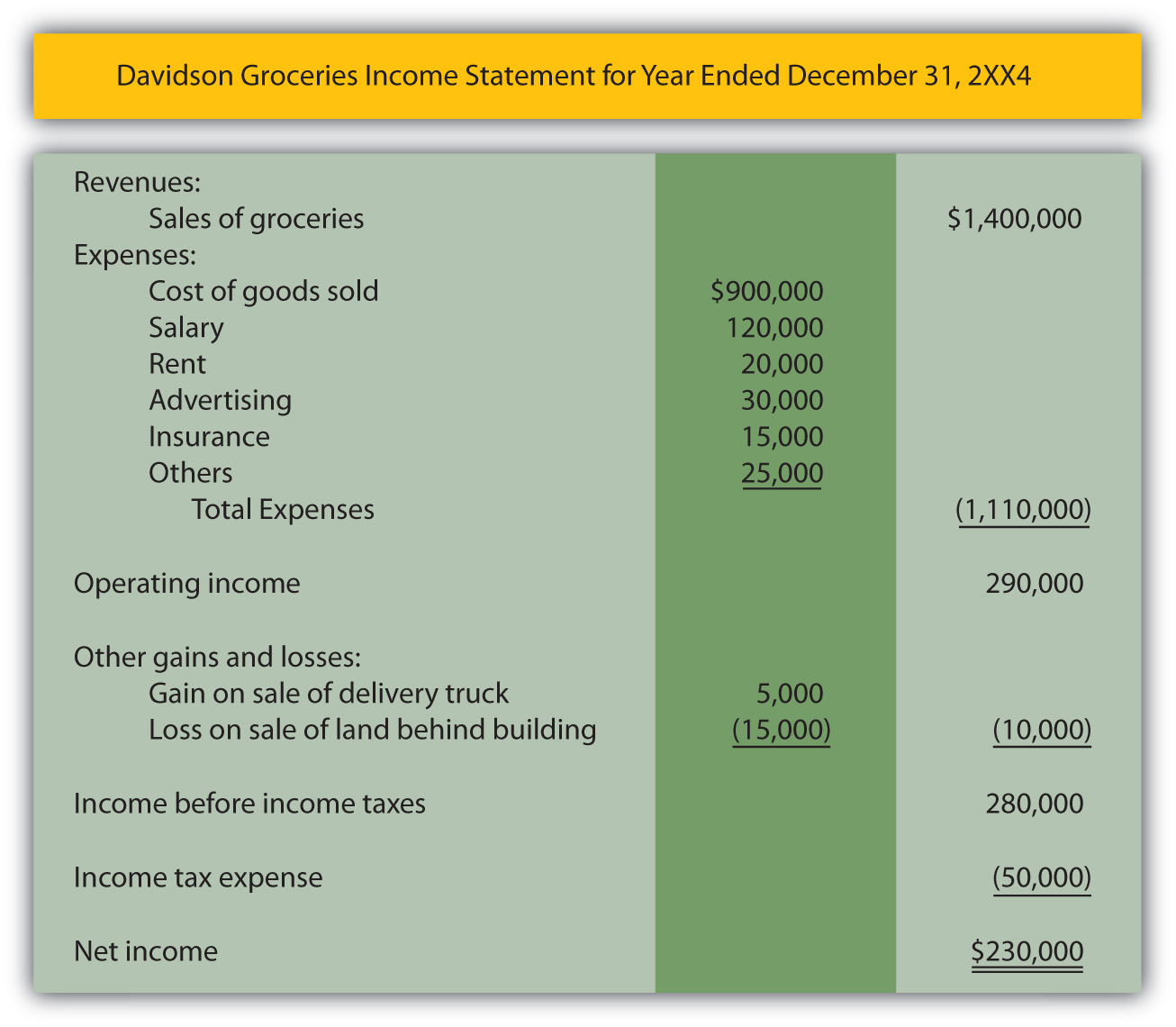Home>Finance>How Do Financial Managers Make Capital Budgeting And Capital Structure Decisions And Why?


Finance
How Do Financial Managers Make Capital Budgeting And Capital Structure Decisions And Why?
Modified: December 29, 2023
Learn how financial managers in the field of finance make crucial decisions regarding capital budgeting and capital structure. Explore the reasons behind their choices.
(Many of the links in this article redirect to a specific reviewed product. Your purchase of these products through affiliate links helps to generate commission for LiveWell, at no extra cost. Learn more)
Table of Contents
- Introduction
- Understanding Capital Budgeting
- Factors Affecting Capital Budgeting Decisions
- Methods Used by Financial Managers in Capital Budgeting
- Importance of Capital Budgeting Decisions
- Understanding Capital Structure
- Factors Affecting Capital Structure Decisions
- Methods Used by Financial Managers in Capital Structure Decisions
- Importance of Capital Structure Decisions
- Relationship between Capital Budgeting and Capital Structure Decisions
- Conclusion
Introduction
Financial managers play a crucial role in making capital budgeting and capital structure decisions for organizations. These decisions have a significant impact on the long-term success and financial health of a company. Capital budgeting involves evaluating and selecting investment opportunities that will generate cash flows in the future, while capital structure decisions determine the mix of debt and equity used to finance these investments.
In the realm of capital budgeting, financial managers are responsible for identifying potential projects or investments that align with the company’s strategic objectives. They must carefully analyze each investment opportunity, considering factors such as the expected returns, risks, and cash flow patterns associated with the project. This evaluation process allows financial managers to determine the feasibility and viability of each investment option.
Capital structure decisions, on the other hand, revolve around determining the proportion of debt and equity financing in a company’s capital structure. Financial managers must assess the optimal balance between these funding sources to maximize the firm’s value and minimize risk. Factors like interest rates, credit ratings, and the financial health of the company influence the decision-making process.
Financial managers utilize various methods and techniques to aid in their capital budgeting and capital structure decisions. When it comes to capital budgeting, popular methods include Net Present Value (NPV), Internal Rate of Return (IRR), and Payback Period. These methods help determine the profitability and potential risks associated with each investment opportunity.
Similarly, financial managers employ different strategies for capital structure decisions. They may consider the Modigliani-Miller theorem, which states that a firm’s value is unaffected by its capital structure under ideal conditions. However, in the real world, factors like the tax advantages of debt and financial distress costs impact the decision-making process.
The importance of capital budgeting and capital structure decisions cannot be understated. Capital budgeting decisions determine which projects receive funding, enabling companies to allocate their limited resources effectively. This ensures that investments are aligned with the company’s goals and have the potential to generate positive returns.
Capital structure decisions, on the other hand, have a direct impact on a company’s cost of capital, profitability, and risk profile. The optimal capital structure can enhance the company’s ability to generate returns for its shareholders and withstand economic downturns.
While capital budgeting and capital structure decisions are distinct, they are interrelated. Capital budgeting decisions heavily influence a company’s need for financing and, consequently, its capital structure. An organization that undertakes large-scale, long-term projects will require significant capital, thus affecting its debt-equity mix.
Overall, financial managers play a critical role in making capital budgeting and capital structure decisions. Their expertise in evaluating investment opportunities and determining the appropriate financing mix is crucial for the success and growth of organizations.
Understanding Capital Budgeting
Capital budgeting is the process by which financial managers evaluate and select investment opportunities that will contribute to the long-term growth and profitability of a company. It involves making decisions about allocating scarce resources to projects that are expected to generate future cash flows. The goal of capital budgeting is to maximize the value of the firm and ensure that investments are in line with the company’s strategic objectives.
Financial managers carefully analyze and assess potential investment opportunities before making capital budgeting decisions. They consider various factors that influence the profitability and risks associated with each project. These factors include the expected cash flows, timing, cost of capital, and potential risks and uncertainties.
One of the primary methods used in capital budgeting is Net Present Value (NPV). NPV calculates the present value of expected future cash flows and compares it to the initial investment cost. If the NPV is positive, it indicates that the project is likely to generate a return greater than the cost of capital and is considered financially sound. On the other hand, a negative NPV suggests that the project may not be a viable investment option.
Another commonly used method is the Internal Rate of Return (IRR). The IRR is the discount rate at which the present value of the cash inflows equals the initial investment cost. Financial managers compare the IRR to the company’s required rate of return. If the IRR exceeds the required rate of return, it implies that the project is expected to generate a return higher than the cost of capital and is considered favorable.
Financial managers also consider the payback period, which calculates the time it takes to recover the initial investment. Projects with shorter payback periods may be preferred as they provide a quicker return of capital. However, the payback period does not account for the time value of money and may be insufficient in evaluating the long-term value of an investment option.
Sensitivity analysis and scenario analysis are other techniques employed in capital budgeting. Sensitivity analysis assesses the impact of varying assumptions or inputs on the project’s profitability, while scenario analysis evaluates the project’s performance under different future scenarios or economic conditions.
Understanding capital budgeting and utilizing appropriate methods enable financial managers to make informed investment decisions. By carefully evaluating the expected cash flows, risks, and returns associated with each project, they can allocate resources efficiently and contribute to maximizing the firm’s value and growth.
Factors Affecting Capital Budgeting Decisions
Capital budgeting decisions are influenced by a multitude of factors that financial managers must consider before selecting investment opportunities. These factors play a critical role in determining the profitability, risks, and feasibility of a project. Let’s explore some of the key factors that impact capital budgeting decisions.
1. Cash Flows: The expected cash inflows and outflows associated with a project are fundamental considerations in capital budgeting. Financial managers analyze the timing and magnitude of these cash flows to assess the project’s profitability and potential risks.
2. Cost of Capital: The cost of capital represents the rate of return required by investors to compensate for the risks associated with a particular investment. Financial managers compare the expected returns of a project with the cost of capital to determine its viability.
3. Risk Assessment: Every investment carries a degree of risk. Financial managers must evaluate the risks associated with a project, including market risks, operational risks, and financial risks. This assessment helps determine whether the potential returns justify the inherent risks.
4. Strategic Fit: Capital budgeting decisions should align with the strategic objectives of the company. Financial managers consider how an investment opportunity contributes to the overall growth and long-term sustainability of the organization.
5. Competitive Environment: The competitive landscape of the industry in which the company operates influences capital budgeting decisions. Financial managers assess how the investment opportunity positions the company in relation to its competitors and if it provides a competitive advantage.
6. Regulatory Environment: Regulatory factors such as government policies, tax incentives, and environmental regulations can impact capital budgeting decisions. Financial managers must account for any legal or regulatory requirements that may affect the profitability or feasibility of a project.
7. Availability of Resources: Financial managers assess the availability of resources, both financial and non-financial, required to undertake a project. They consider factors such as skilled labor, raw materials, technology, and infrastructure, and evaluate whether the necessary resources can be obtained within the required timeframe and budget.
8. Project Lifecycle: The stage of the project’s lifecycle influences capital budgeting decisions. Financial managers may give preference to projects in the development or expansion phase, as they may offer higher growth potential compared to mature projects.
9. Economic Conditions: The overall economic conditions, including inflation rates, interest rates, and economic growth, can impact capital budgeting decisions. Financial managers consider how economic factors may affect the costs, revenues, and profit potential of an investment.
10. Company’s Financial Position: The financial health and available financial resources of the company play a significant role in capital budgeting decisions. Financial managers assess the company’s ability to finance the investment and consider how it may impact the company’s overall financial stability.
By considering these factors, financial managers can make informed capital budgeting decisions, ensuring that investments align with the company’s objectives and have the potential to generate positive returns.
Methods Used by Financial Managers in Capital Budgeting
Financial managers employ various methods and techniques to assist in the capital budgeting decision-making process. These methods help evaluate investment opportunities, assess their profitability, and determine their feasibility. Let’s explore some of the commonly used methods in capital budgeting.
1. Net Present Value (NPV): NPV is a widely used method that calculates the present value of expected future cash flows generated by an investment project. By discounting these cash flows at the company’s cost of capital, financial managers can determine whether the project will add value to the firm. A positive NPV indicates that the project is expected to generate returns higher than the cost of capital, making it financially viable.
2. Internal Rate of Return (IRR): The IRR method calculates the discount rate at which the present value of future cash flows equals the initial investment. Financial managers compare the IRR to the required rate of return or cost of capital. If the IRR exceeds the required rate of return, the project is considered acceptable because it is expected to generate returns greater than the cost of capital.
3. Payback Period: The payback period is the time it takes for the initial investment to be recovered from the cash flows generated by the project. Financial managers use this method to assess the project’s liquidity and risk. A shorter payback period is generally preferred, as it indicates a quicker recovery of the invested capital.
4. Profitability Index (PI): The profitability index measures the relationship between the present value of future cash flows and the initial investment. It is calculated by dividing the present value of the cash flows by the initial investment. Financial managers use the profitability index as a criterion for evaluating investment opportunities. A profitability index greater than 1 indicates that the investment is expected to yield positive returns.
5. Discounted Cash Flow (DCF): DCF analysis involves estimating the future cash flows of an investment project and discounting them to their present value using the company’s cost of capital. This method is used to assess the profitability and value creation potential of the project.
6. Sensitivity Analysis: Financial managers perform sensitivity analysis to evaluate the impact of changes in key input variables on the project’s profitability. They vary variables such as sales volume, costs, and market conditions to understand the project’s sensitivity to these factors and assess its robustness.
7. Scenario Analysis: In scenario analysis, financial managers evaluate the project’s performance under different scenarios or economic conditions. By considering best-case, worst-case, and most likely scenarios, they gain insights into the project’s potential outcomes and associated risks.
8. Real Options Analysis: Real options analysis involves considering the value of flexibility or options embedded in investment projects. Financial managers assess the value of the ability to delay, expand, or abandon a project based on changing market conditions or new information.
These methods are essential tools in capital budgeting decisions. Financial managers use a combination of these techniques to evaluate investment opportunities, estimate their profitability, and assess their risks. By employing these methods, financial managers can make informed decisions that align with the company’s strategic objectives and maximize shareholder value.
Importance of Capital Budgeting Decisions
Capital budgeting decisions are of utmost importance for organizations as they have a significant impact on the long-term success and financial health of the company. Here are some key reasons why capital budgeting decisions hold immense importance:
1. Efficient Resource Allocation: Capital budgeting decisions help in allocating scarce resources to projects that have the potential to generate future cash flows. By evaluating and selecting investment opportunities, financial managers ensure that capital is directed towards projects that align with the company’s strategic objectives and have the highest probability of delivering positive returns.
2. Enhanced Financial Performance: Effective capital budgeting decisions contribute to the overall financial performance of the company. By investing in projects with positive net present values and high internal rates of return, financial managers can increase profitability and enhance the value of the firm. This is achieved by maximizing the use of resources and selecting projects that deliver the highest return on investment.
3. Risk Mitigation: Capital budgeting decisions involve a careful assessment of risks associated with each investment opportunity. Financial managers analyze market risks, operational risks, regulatory risks, and financial risks, among others. By thoroughly evaluating risks, they can make informed decisions to mitigate potential threats and ensure the long-term sustainability of the organization.
4. Alignment with Strategic Objectives: Capital budgeting decisions play a crucial role in aligning investments with the company’s strategic objectives. Financial managers evaluate whether potential projects contribute to the company’s growth, competitive advantage, and overall strategic direction. This ensures that the investments are in line with the company’s vision and long-term goals.
5. Long-Term Planning: Capital budgeting decisions involve analyzing the long-term impact of projects on the company’s financial health and performance. By considering the expected cash flows over the project’s lifecycle, financial managers can make informed decisions about investment opportunities that will generate sustainable growth and value in the long run.
6. Efficient Use of Capital: Capital budgeting decisions help in determining the optimal allocation of capital between different projects or investment opportunities. Financial managers assess the financial feasibility and profitability of each project, allowing them to select and prioritize those with the highest potential returns. This ensures that capital is utilized efficiently and not wasted on projects that may yield inadequate results.
7. Enhanced Stakeholder Confidence: Effective capital budgeting decisions contribute to building stakeholder confidence. Investors, lenders, and shareholders are more likely to have trust and confidence in an organization that demonstrates a disciplined approach to allocating capital and selecting projects prudently. This can lead to increased access to capital and a positive reputation in the financial markets.
Capital budgeting decisions are crucial in shaping the growth and profitability of an organization. By strategically allocating resources, mitigating risks, and aligning investments with the company’s objectives, financial managers can contribute to the long-term success and sustainability of the organization.
Understanding Capital Structure
Capital structure refers to the mix of debt and equity financing used by a company to fund its operations and investments. It represents how a company raises capital and the proportion of ownership and debt obligations it has. Understanding capital structure is crucial for financial managers as it directly impacts a company’s financial position, risk profile, and profitability.
Equity financing involves raising funds by issuing shares of ownership in the company. This can be done through initial public offerings (IPOs), secondary offerings, or private placements. Equity investors become shareholders and have ownership rights, including voting rights and claim to a portion of the company’s profits in the form of dividends or capital gains.
Debt financing, on the other hand, involves borrowing money from various sources such as banks, financial institutions, or bondholders. The company agrees to repay the debt with interest over a specified period. Debt investors are lenders and have a legal claim to the company’s assets until the debt is repaid. Debt financing includes loans, bonds, and other forms of debt instruments.
The composition of a company’s capital structure is determined by several factors:
1. Cost of Capital: Financial managers consider the cost of equity and the cost of debt when determining the capital structure. The cost of equity is the return expected by shareholders, while the cost of debt is the interest or coupon rate of borrowing. By evaluating these costs, financial managers strive to optimize the overall cost of capital, ensuring that the capital structure minimizes the company’s cost of financing.
2. Financial Flexibility: The capital structure affects a company’s financial flexibility. Equity financing provides more flexibility as there are no contractual obligations for repayment. On the other hand, debt financing imposes repayment requirements and interest payments, reducing financial flexibility. Financial managers consider the company’s cash flow and risk tolerance to determine the appropriate level of financial flexibility.
3. Risk Profile: Capital structure decisions also impact a company’s risk profile. By increasing the level of debt, the company’s financial risk increases due to the obligation to make interest payments and repay the principal amount. Financial managers assess the company’s ability to meet debt obligations and manage financial risk, ensuring a suitable balance of equity and debt to maintain an optimal risk profile.
4. Tax Considerations: The tax deductibility of interest payments makes debt financing attractive for companies. Interest payments can be deducted from taxable income, resulting in reduced tax liabilities. Financial managers consider the tax advantages of debt when determining the capital structure to optimize the tax benefits and minimize the overall tax burden.
5. Industry and Market Factors: The industry in which a company operates can influence its capital structure decisions. Different industries have varying levels of debt capacity and financial risk tolerance. In addition, market conditions, investor preferences, and economic factors can also influence the choice between debt and equity financing.
Understanding the capital structure helps financial managers make informed decisions about the mix of debt and equity financing. They strive to strike a balance between optimizing the cost of capital, maintaining financial flexibility, managing risk, and taking advantage of tax benefits. By carefully managing the capital structure, financial managers can enhance a company’s financial position, profitability, and ability to finance future growth.
Factors Affecting Capital Structure Decisions
Capital structure decisions involve determining the optimal mix of debt and equity financing for a company. These decisions are influenced by various factors that financial managers consider when determining the most suitable capital structure for the organization. Let’s explore some of the significant factors that impact capital structure decisions:
1. Business Risk: The level of business risk associated with the company’s operations plays a crucial role in capital structure decisions. Industries with stable and predictable cash flows are more likely to have higher debt levels as they can comfortably service the debt obligations. Conversely, industries with volatile cash flows may prefer a more conservative approach with lower levels of debt to mitigate the risk of financial distress.
2. Financial Risk Tolerance: Each company has a different risk tolerance level based on its financial health and management’s risk appetite. Financial managers assess the company’s ability to handle financial risk, including substantial debt repayments and interest costs. Companies with strong cash flow generation and steady profitability are better positioned to take on higher levels of debt.
3. Cost of Capital: The cost of capital plays a significant role in determining the capital structure. Financial managers consider the cost of equity and the cost of debt when evaluating the most efficient capital structure. The cost of equity is influenced by factors such as the company’s risk profile and investor expectations, while the cost of debt is affected by interest rates and the company’s creditworthiness.
4. Tax Considerations: The tax advantages of debt financing can impact capital structure decisions. Interest payments on debt are tax-deductible, reducing the company’s tax liabilities. This makes debt financing more attractive from a tax perspective. Financial managers consider the tax shield benefits when deciding on the optimal level of debt in the capital structure.
5. Flexibility and Control: The desire for flexibility and control over the company’s operations can influence capital structure decisions. Equity financing provides more flexibility as there are no contractual obligations for repayment. Companies that prioritize control over their operations may prefer equity financing to maintain ownership without the constraints imposed by debt financing.
6. Access to Capital Markets: The availability and cost of capital in the financial markets can impact capital structure decisions. Companies with strong credit ratings and favorable market conditions may have easier access to debt financing at lower costs. Financial managers assess market conditions, investor demand, and the company’s reputation when determining the appropriate mix of debt and equity.
7. Market and Investor Perception: The perception of the company in the market and investor sentiment can influence capital structure decisions. Financial managers consider the impact of the capital structure on the company’s image and the market’s response to the financing decisions. Companies wanting to project stability and conservative financial management may opt for lower levels of debt to maintain a positive market perception.
8. Industry Norms: Industry norms and practices can also influence capital structure decisions. Financial managers evaluate the capital structures of peer companies within the same industry to ensure alignment and avoid any negative impact on competitiveness. Industry-specific regulations and capital market expectations can also shape the capital structure decisions.
These factors, among others, come into play when financial managers make capital structure decisions. Striking the right balance between debt and equity financing is crucial to optimize the company’s cost of capital, manage risk, maintain financial flexibility, and meet the company’s overall strategic objectives.
Methods Used by Financial Managers in Capital Structure Decisions
Financial managers employ various methods and strategies when making capital structure decisions for a company. These methods help determine the optimal mix of debt and equity financing that maximizes the company’s value while considering factors such as risk, cost, and flexibility. Here are some commonly used methods in capital structure decision-making:
1. Modigliani-Miller Theorem: The Modigliani-Miller theorem states that, under ideal conditions, the value of a company is independent of its capital structure. It posits that the market value of a firm is determined by its underlying business operations and not influenced by how it is financed. While this theory provides a theoretical framework, financial managers understand that there are real-world factors such as taxes and market imperfections that can impact capital structure decisions.
2. Debt Capacity Analysis: Financial managers conduct debt capacity analysis to determine the amount of debt a company can comfortably take on without risking financial distress. This analysis considers factors such as cash flow, profitability, assets, and liabilities. By assessing the company’s ability to meet future debt obligations, financial managers can determine an appropriate level of debt in the capital structure.
3. Cost of Capital Evaluation: Financial managers evaluate the cost of capital associated with different capital structures. The cost of capital considers the cost of both debt and equity financing. By comparing the weighted average cost of capital (WACC) for different capital structures, financial managers can identify the structure that minimizes the company’s overall cost of financing while maximizing shareholder value.
4. Ratios and Leverage Analysis: Financial ratios, such as the debt-to-equity ratio and leverage ratios, are used to evaluate the impact of different capital structures on the company’s financial risk and solvency. Financial managers analyze how changes in the level of debt affect the company’s leverage and assess the potential risks associated with increased debt financing.
5. Market Conditions and Investor Preferences: Financial managers consider market conditions and investor preferences when making capital structure decisions. They assess factors such as prevailing interest rates, market sentiment, and investors’ attitude towards risk. By understanding market dynamics, financial managers can determine the most favorable mix of debt and equity financing that aligns with investor expectations and market conditions.
6. Credit Ratings and Investor Perception: Credit ratings assigned to the company by rating agencies play a crucial role in capital structure decisions. Financial managers consider the impact of different capital structures on the company’s creditworthiness and credit rating. They analyze the potential effects on borrowing costs and investor confidence resulting from changes in the capital structure.
7. Flexibility and Contingency Planning: Financial managers evaluate the level of flexibility and contingency planning provided by different capital structures. They consider the ability to access additional funding, renegotiate debt terms, or adjust the capital structure quickly in response to changing market conditions or unforeseen events.
8. Industry and Peer Analysis: Financial managers analyze the capital structures of peer companies within the same industry to benchmark against industry norms and practices. By comparing the capital structures of similar companies, they gain insights into industry-specific financing approaches and ensure that the company’s structure remains competitive and aligned with industry standards.
By utilizing these methods and strategies, financial managers can make informed capital structure decisions that balance risk, cost, flexibility, and market expectations. These decisions have a significant impact on the company’s financial health, ability to raise capital, and overall value creation for its shareholders.
Importance of Capital Structure Decisions
Capital structure decisions are of paramount importance for businesses as they directly impact the company’s financial health, risk profile, and ability to maximize shareholder value. Financial managers play a vital role in making informed capital structure decisions that align with the company’s goals and optimize its financial structure. Here are some key reasons why capital structure decisions hold immense importance:
1. Managing Financial Risk: An optimal capital structure allows companies to effectively manage financial risk. By balancing debt and equity financing, financial managers can mitigate the risk of financial distress and bankruptcy. A well-structured capital base ensures that the company has sufficient cash flow to service its debt obligations while maintaining a healthy level of equity to absorb financial shocks. Financial managers carefully assess the capital structure to strike the right balance and protect the company’s financial stability.
2. Cost of Capital Optimization: Capital structure decisions impact the company’s cost of capital, which directly affects the overall profitability and valuation of the firm. By considering the cost of debt and the cost of equity, financial managers aim to achieve an optimal capital structure that minimizes the average cost of capital. This ensures that the company can access funding at the most favorable terms, reducing the cost of borrowing and increasing overall profitability.
3. Maximizing Shareholder Value: Effective capital structure decisions aim to maximize shareholder value. Financial managers strive to strike a balance between debt and equity financing to optimize the company’s capital structure and enhance the return on investment for shareholders. A well-designed capital structure can lead to higher earnings per share and dividend payments, attracting investors and increasing the market value of the company.
4. Access to Financing: The capital structure of a company significantly impacts its ability to raise funds from the capital markets. Financial managers carefully assess the company’s financial health and creditworthiness when determining the optimal capital structure. A well-structured capital base enhances the company’s ability to raise debt financing at favorable interest rates and attract equity investors who are confident in the company’s financial stability. This ensures that the company has access to the necessary funds to support its growth and investment initiatives.
5. Strategic Flexibility: Capital structure decisions also provide strategic flexibility for the company. By balancing debt and equity, financial managers can maintain the flexibility to take advantage of growth opportunities or navigate through economic downturns and market uncertainties. A suitable capital structure allows companies to adjust their financing mix based on changing market conditions and strategic objectives.
6. Investor and Creditor Confidence: A well-designed capital structure instills confidence in both investors and creditors. Financial managers aim to achieve an optimal capital structure that aligns with industry standards, market expectations, and the company’s financial health. This builds trust among investors and creditors, improving the company’s ability to attract capital on favorable terms and establish strong relationships with key stakeholders.
7. Long-Term Sustainability: Capital structure decisions play a crucial role in ensuring the long-term sustainability of the company. By maintaining a balanced capital structure, financial managers can position the company to weather economic downturns, market fluctuations, and industry challenges. An appropriate capital structure provides the financial resilience necessary to sustain operations, meet obligations, and pursue growth opportunities even in challenging times.
Capital structure decisions significantly impact a company’s financial position, risk profile, and overall value creation. Financial managers carefully evaluate the company’s financial health, the cost of capital, and market conditions to make informed decisions regarding debt and equity financing. By optimizing the capital structure, companies can manage financial risk, enhance profitability, attract capital, and position themselves for long-term success and value creation.
Relationship between Capital Budgeting and Capital Structure Decisions
Capital budgeting and capital structure decisions are two interconnected aspects of financial management that play a crucial role in determining the long-term financial success of a company. While they address different aspects of financing and investment, there is a notable relationship between the two. Let’s delve into the relationship between capital budgeting and capital structure decisions:
Capital budgeting is the evaluation and selection of investment opportunities that align with a company’s strategic objectives and have the potential to generate future cash flows. Financial managers analyze the expected returns, risks, and cash flow patterns associated with investment projects to determine their viability. The capital budgeting process directly influences a company’s need for capital financing and, consequently, its capital structure decisions.
In capital budgeting, financial managers identify investment opportunities that require funding, such as the acquisition of new assets, development of new products, or expansion into new markets. The evaluation of these investment opportunities involves estimating the cash inflows and outflows associated with each project, assessing their risk profiles, and calculating investment metrics like net present value (NPV) and internal rate of return (IRR).
Once financial managers have analyzed investment opportunities and determined the capital requirements, they turn to capital structure decisions. Capital structure decisions encompass the mix of debt and equity financing used to fund the investments identified through the capital budgeting process. Financial managers carefully consider factors such as cost of capital, risk tolerance, tax implications, and investor preferences when determining the optimal capital structure.
The capital structure decision directly impacts the availability, cost, and flexibility of financing for the investment projects identified in capital budgeting. Financial managers evaluate how different levels of debt and equity affect the company’s financial risk, ability to meet debt obligations, and overall cost of capital. They aim to strike a balance that maximizes shareholder value by minimizing the cost of capital while maintaining the financial stability and risk profile desired by investors and creditors.
Furthermore, the selection of investment projects through capital budgeting decisions influences the company’s cash flow generation and anticipated profitability. These factors, in turn, affect the company’s ability to service debt and meet financial obligations. Financial managers consider the projected cash flows from investment projects to determine the level of debt that can be supported by the company’s expected earnings and cash flow generation capacity.
It is important to note that while there is a relationship between capital budgeting and capital structure decisions, they are distinct processes. Capital budgeting focuses on evaluating investment opportunities, while capital structure decisions involve determining the financing mix for these investments. However, the outcome of capital budgeting decisions significantly influences capital structure decisions as it determines the funding requirements and cash flow generation potential of the company.
In summary, capital budgeting and capital structure decisions are intertwined in the sense that the selection of investment opportunities in capital budgeting directly impacts the capital structure decisions made by financial managers. Effective coordination between these two aspects of financial management is crucial for ensuring the alignment of investment decisions with the company’s strategic objectives and optimizing its capital structure for sustainable growth and profitability.
Conclusion
Capital budgeting and capital structure decisions are vital components of financial management that significantly impact the long-term success and financial health of a company. Financial managers play a crucial role in evaluating investment opportunities, allocating resources, and determining the optimal mix of debt and equity financing.
Capital budgeting decisions involve selecting investment projects that align with the company’s strategic objectives and have the potential to generate positive cash flows in the future. Financial managers employ various methods such as NPV, IRR, and payback period to assess the feasibility, profitability, and risks associated with each investment option.
Capital structure decisions, on the other hand, involve determining the proportion of debt and equity financing in the company’s capital structure. Financial managers assess factors such as the cost of capital, risk tolerance, tax implications, and market conditions to find the optimal balance between debt and equity.
The relationship between capital budgeting and capital structure decisions is evident. Capital budgeting decisions directly impact the company’s need for capital financing, which in turn influences the capital structure decisions. The cash flow projections, risk assessments, and profitability estimates derived from capital budgeting guide financial managers in determining the appropriate debt-to-equity ratio for the company.
Both capital budgeting and capital structure decisions are essential for efficient resource allocation, risk management, and value maximization. Effective capital budgeting ensures that investment projects are aligned with the company’s strategic objectives and have the potential to generate positive returns. Optimal capital structure decisions help manage financial risk, minimize borrowing costs, and maximize shareholder value.
Financial managers utilize a range of methods, such as the Modigliani-Miller theorem, debt capacity analysis, cost of capital evaluation, and industry benchmarking, to make informed capital structure decisions. By carefully analyzing financial factors, market conditions, and industry norms, they strive to strike a balance that meets the company’s financing needs while maintaining its financial stability and market credibility.
In conclusion, capital budgeting and capital structure decisions are interdependent and critical in shaping the financial position and success of a company. Financial managers must consider various factors, employ appropriate methods, and maintain a forward-looking perspective to optimize these decisions. With effective capital budgeting and well-designed capital structure decisions, companies can position themselves for long-term growth, profitability, and resilience in an ever-changing business environment.














